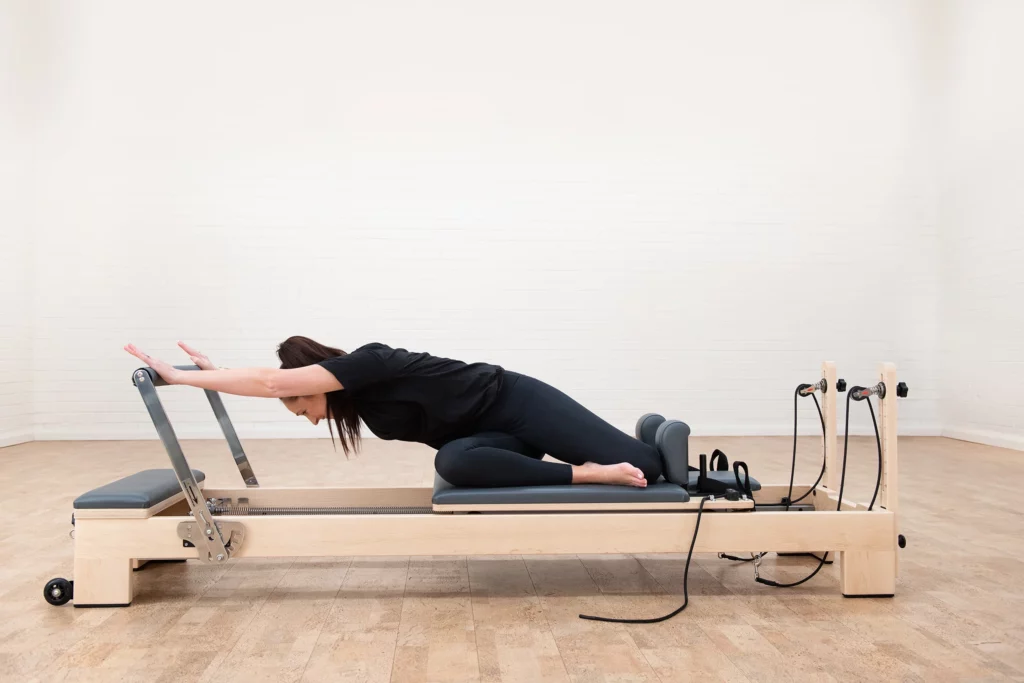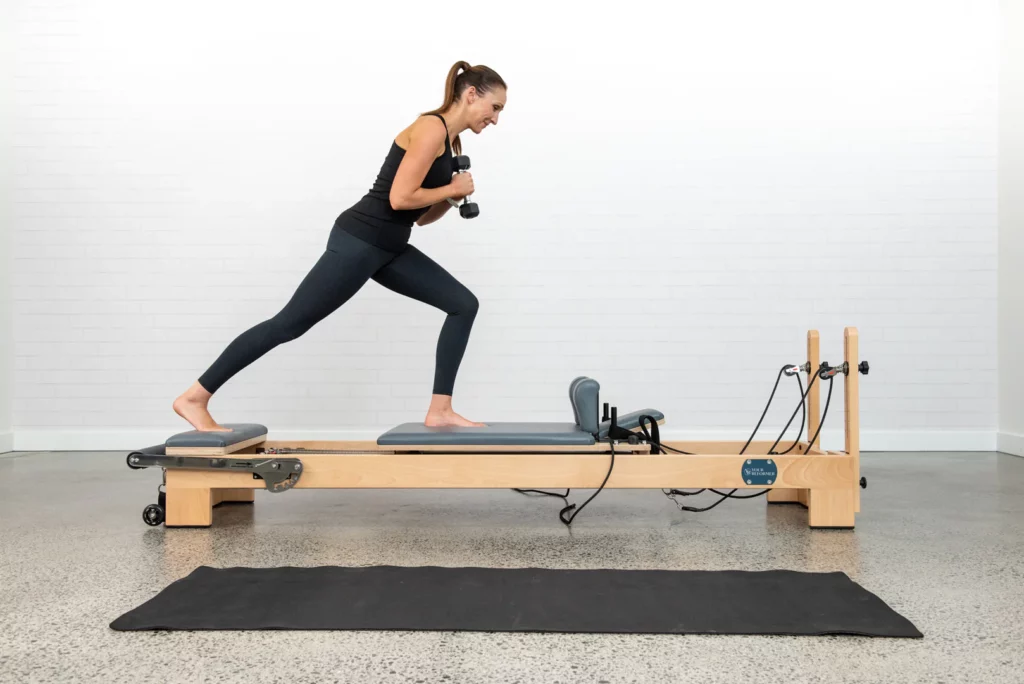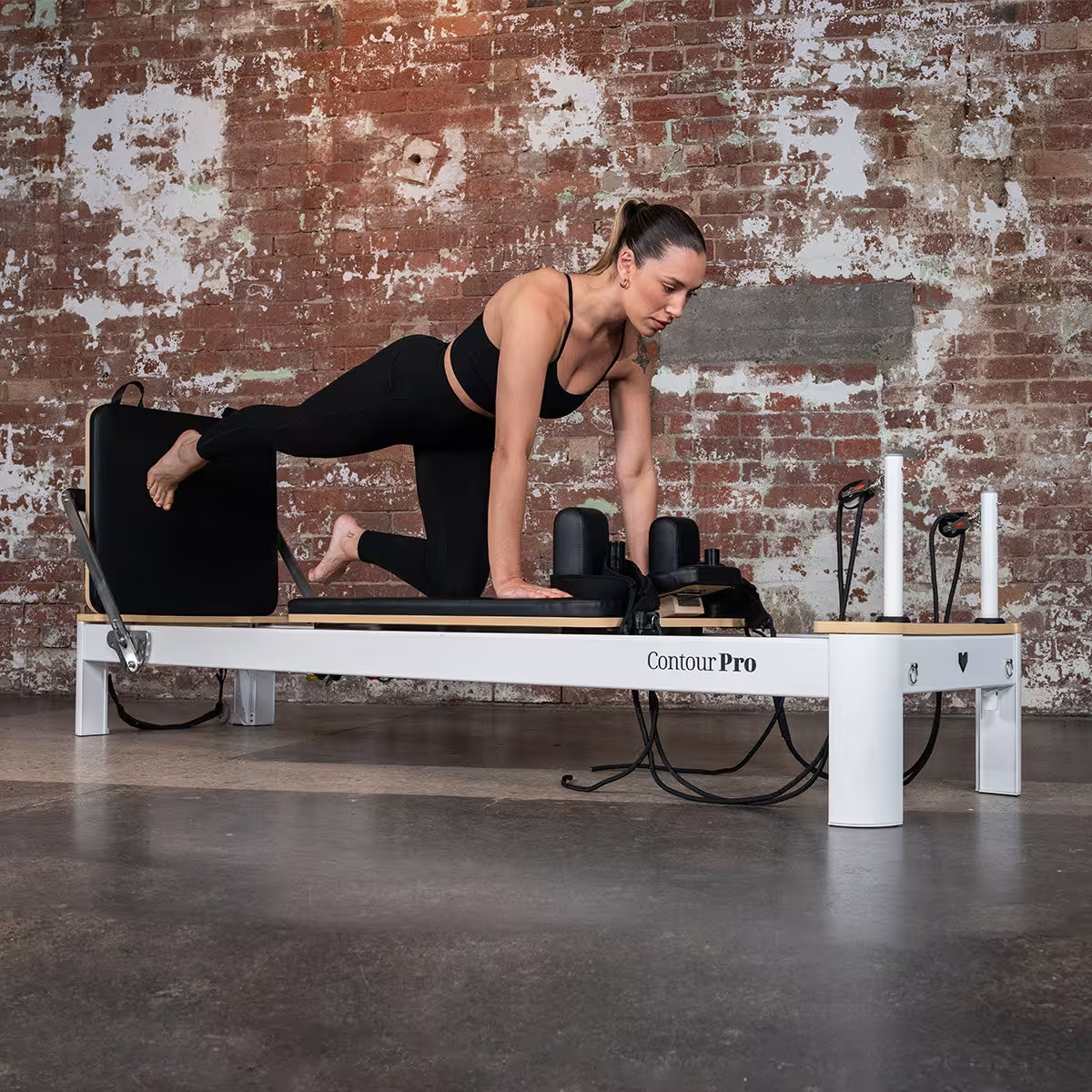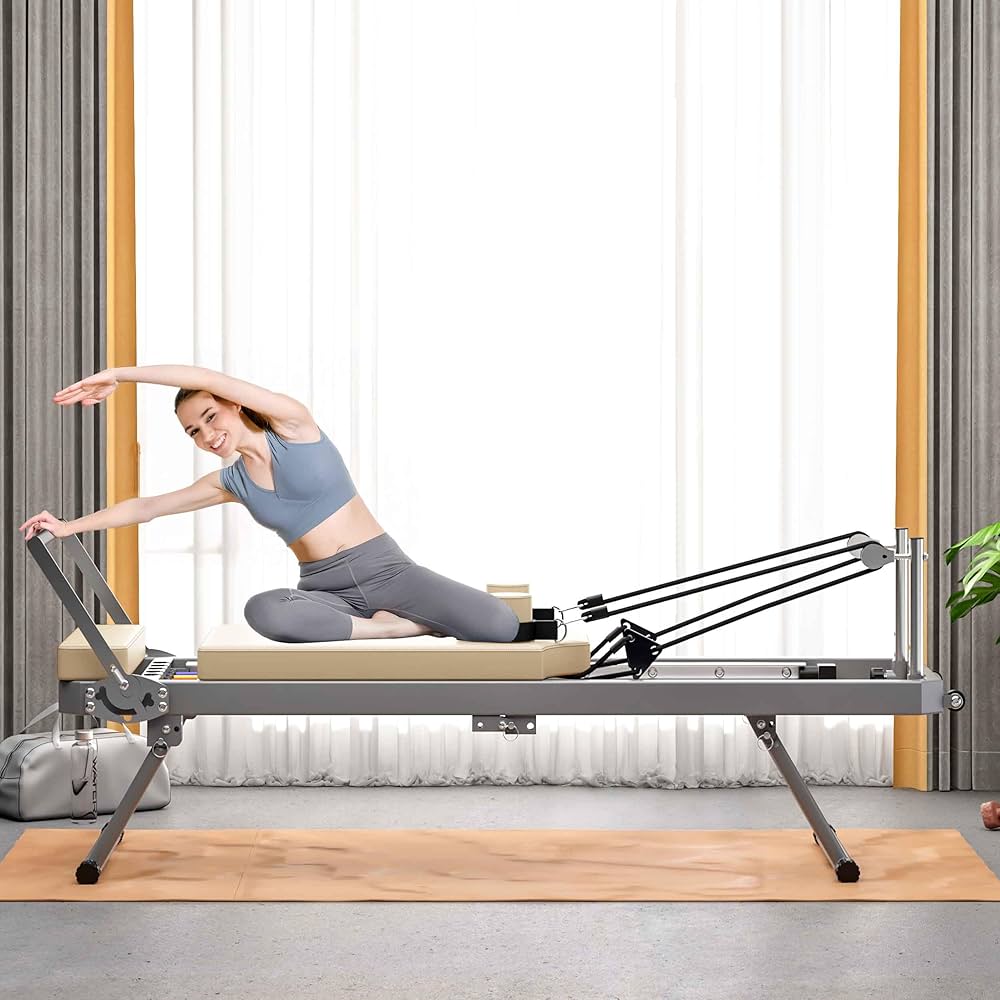For enthusiasts of Pilates, the Pilates bed, also known as the reformer, is an essential piece of equipment that can significantly enhance workouts. However, like any other fitness equipment, it requires proper maintenance to ensure optimal performance and longevity. This guide provides comprehensive insights into maintaining your Pilates bed at home, ensuring it remains in top condition for your practice.
Understanding Your Pilates Bed
Before diving into maintenance, it’s crucial to understand the components of your Pilates bed. Familiarity with its parts will aid in identifying areas that require attention. Typically, a Pilates bed consists of a frame, a carriage, springs, straps, and a footbar.
The Frame
The frame is the sturdy foundation of the Pilates bed. It supports the entire structure and bears the weight during exercises. Regularly inspect the frame for any signs of wear or damage, as a compromised frame can affect stability. A well-maintained frame not only ensures safety but also enhances the overall effectiveness of your workouts, allowing for a more fluid and controlled movement. Consider applying a protective finish to the wood or metal to prevent scratches and prolong its lifespan, especially if your Pilates bed is frequently used in a commercial setting.
The Carriage
The carriage is the moving part of the bed that slides along the frame. It is essential for various exercises, and any obstruction or malfunction can hinder your workout. Ensure that the carriage glides smoothly and is free from debris. Regular lubrication of the tracks can significantly improve the performance of the carriage, making transitions between exercises seamless. Additionally, be mindful of the weight distribution on the carriage during use, as uneven loading can lead to premature wear and tear, affecting both the functionality and safety of your Pilates bed.
Springs and Straps
Springs provide resistance, while straps help in performing various movements. Regularly check the springs for signs of wear, such as fraying or loss of elasticity. Straps should be cleaned and inspected for any tears or damage that could compromise safety. It’s also beneficial to familiarise yourself with the different spring tensions available, as this knowledge allows you to tailor your resistance levels according to your fitness goals. Furthermore, consider replacing springs in pairs to maintain balanced resistance, ensuring a consistent and effective workout experience. Regularly washing the straps with a gentle detergent can also help maintain their integrity and hygiene, particularly if they are used frequently in a group setting.
Routine Cleaning and Maintenance
Regular cleaning is vital for maintaining the hygiene and functionality of your Pilates bed. A clean bed not only looks appealing but also ensures a safe workout environment. Neglecting to keep your equipment in pristine condition can lead to wear and tear, which may ultimately affect your performance and safety during workouts.
Daily Cleaning
After each use, it’s advisable to wipe down the surface of the bed with a damp cloth. This removes sweat and prevents the build-up of grime. For a deeper clean, consider using a mild detergent mixed with water, ensuring you rinse off any residue. It’s also beneficial to regularly check the padding for any signs of wear, as this can impact your comfort during exercises. Keeping a dedicated cleaning kit nearby can streamline this process, making it easier to maintain your equipment after each session.
Weekly Maintenance
Once a week, inspect the springs and straps closely. Use a soft brush to remove any dust or debris that may have accumulated. Additionally, check the carriage for any signs of obstruction and clean the tracks to ensure smooth movement. It’s important to pay attention to the tension of the springs, as improper tension can affect the resistance and overall effectiveness of your workouts. Regularly lubricating the moving parts can also enhance performance and extend the life of your Pilates bed.
Monthly Deep Clean
Every month, perform a thorough cleaning of the entire Pilates bed. This includes removing the carriage to clean the tracks underneath. Pay special attention to the footbar and any other components that may not be cleaned regularly. This deep clean will help prolong the life of your equipment. Additionally, consider checking the upholstery for any tears or damage that may need repairing. Keeping your Pilates bed in top condition not only ensures a pleasant workout experience but also reflects your commitment to maintaining a healthy lifestyle.
Preventing Wear and Tear
While regular cleaning is essential, preventing wear and tear is equally important. Taking proactive measures can save you from costly repairs or replacements in the long run.
Proper Usage
Using the Pilates bed correctly is fundamental to its longevity. Ensure that all users are aware of the proper techniques and weight limits. Avoid jumping or putting excessive force on the equipment, as this can lead to undue stress on the frame and springs. Additionally, consider providing a brief orientation for new users, highlighting the importance of controlled movements and the correct positioning of the body during exercises. This not only enhances the effectiveness of the workout but also significantly reduces the risk of damage to the equipment.
Storage Considerations
If space allows, it’s best to keep your Pilates bed in a designated area where it is not subject to frequent movement or contact with other objects. If you need to store it away, ensure it is in a dry place, as moisture can lead to rust or mould. Furthermore, consider using a protective cover when the equipment is not in use. This can shield it from dust and accidental scratches, thereby maintaining its aesthetic appeal and functionality. Proper storage solutions, such as wall brackets or dedicated storage racks, can also help in preserving the equipment’s condition over time.
Regular Inspections
Schedule regular inspections of your Pilates bed to identify any potential issues before they escalate. Look for loose screws, worn springs, or any signs of damage. Addressing these issues promptly can prevent more significant problems down the line. It may also be beneficial to keep a maintenance log, noting any repairs made or parts replaced. This not only helps in tracking the equipment’s condition but can also be invaluable if you decide to sell or upgrade in the future. Regularly lubricating moving parts can also enhance performance and extend the life of the equipment, ensuring that your Pilates bed remains in peak condition for years to come.

Addressing Common Issues
Even with proper maintenance, issues may occasionally arise. Understanding how to address common problems can keep your Pilates bed functioning optimally.
Noisy Operation
If your Pilates bed is making unusual noises during use, it may be due to loose screws or a lack of lubrication. Check all screws and tighten them as necessary. If the noise persists, consider applying a silicone-based lubricant to the moving parts. Additionally, it may be beneficial to inspect the bed’s frame for any signs of wear or damage, as structural issues can also contribute to unwanted sounds. Regularly scheduled checks can help prevent these noises from becoming a nuisance, ensuring a peaceful workout environment.
Stiff Carriage Movement
A stiff carriage can disrupt your workout. This issue is often caused by dirt or debris in the tracks. Clean the tracks thoroughly and ensure the carriage is free of any obstructions. If the problem continues, inspect the rollers for wear and consider replacing them. Furthermore, it’s advisable to periodically lubricate the tracks to maintain smooth operation. A well-maintained carriage not only enhances your performance but also prolongs the lifespan of your equipment, allowing you to focus on your practice rather than mechanical distractions.
Spring Replacement
Over time, springs can lose their elasticity and may need replacement. If you notice that the resistance feels different or if a spring appears damaged, it’s time to replace it. Always use springs that are compatible with your specific Pilates bed model. It’s worth noting that springs come in various strengths, and selecting the right one can significantly impact your workout intensity. Keeping a spare set of springs on hand can save you time and ensure that your Pilates sessions remain uninterrupted, allowing you to maintain your fitness routine without unnecessary delays.
Enhancing Your Pilates Experience
Maintaining your Pilates bed not only keeps it in good condition but also enhances your overall Pilates experience. A well-maintained bed allows for smoother movements and a safer workout. Regular cleaning and inspection of the springs, straps, and carriage can prevent any potential hazards and ensure that you are getting the most out of each session. Furthermore, a tidy and well-kept environment can significantly boost your motivation and enjoyment during workouts.
Customising Your Equipment
Consider personalising your Pilates bed with additional accessories that can enhance your practice. Items such as a reformer box or a jump board can add variety to your workouts and keep your routine engaging. Additionally, you might explore the option of adding resistance bands or foot straps that can provide different levels of challenge and support, catering to your individual fitness goals. Customisation not only makes your practice more enjoyable but also allows you to tailor your workouts to target specific muscle groups or improve your overall flexibility.
Investing in Quality Accessories
When purchasing accessories or replacement parts, always opt for high-quality products. Investing in reputable brands ensures that you receive durable and reliable equipment that complements your Pilates bed. High-quality accessories can enhance your performance and safety, as they are designed to withstand the rigours of regular use. Moreover, consider exploring eco-friendly options that are becoming increasingly popular, as they not only support your health but also contribute positively to the environment.
Engaging with the Community
Joining a Pilates community can provide additional insights into maintenance and usage. Engaging with fellow enthusiasts can offer tips and tricks that can further enhance your experience and knowledge about your equipment. Many communities also organise workshops and classes that focus on specific techniques or equipment care, allowing you to deepen your understanding and refine your skills. Social media platforms and local studios often host forums where members share their experiences and recommendations, creating a supportive network that can inspire you to explore new routines and approaches to your practice.

Conclusion
Maintaining your Pilates bed at home is a straightforward process that requires regular attention and care. By understanding the components, performing routine cleaning, preventing wear and tear, and addressing common issues, you can ensure that your Pilates bed remains a valuable asset in your fitness journey.
With the right maintenance, your Pilates bed will not only serve you well for years to come but will also enhance your overall practice, allowing you to achieve your fitness goals with confidence and ease. Embrace the responsibility of upkeep, and enjoy the myriad benefits that a well-maintained Pilates bed can bring to your home workouts.
See Also: Exploring new workout possibilities with a Pilates Reformer Bed.


